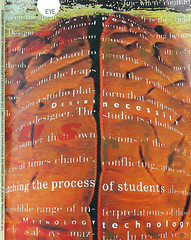Spring 1994
Protest minus the politics
Graphic Agitation: Social and Political graphics Since the Sixties
Liz McQuiston<br>Phaidon Press, £29.95The 1990s began ostensibly as the decade of ‘caring and sharing’, with politicians such as Ronald Reagan requesting the general public ‘voluntarily’ to take an active part in their communities to ‘correct’ social and environmental misery. But with the recent escalation of race riots, religious wars, violations of human rights and environmental disasters, the establishment’s wishful thinking is being challenged by a resurgence of grass roots activism. A multitude of political causes is accompanied by an equal number of pressure and interest groups promoting ideologies ranging from revolutionary extremism to left-wing liberalism. This range of concerns is given eloquent voice in the powerful display of visual imagery and politically motivated graphic objects – posters, billboards underground magazines and so on – collected in Liz McQuiston’s Graphic Agitation.
The book is essentially a visual catalogue of well-known and not so well-known political and social graphics. The inclusion of propaganda produced by both official sources (government agencies, consumer groups, political parties) and unofficial sources (underground press, flyers, graffiti) provides a seemingly unbiased perspective on a highly emotive subject. A disturbing X-ray portrait of a woman fills the front of the dust jacket, placing the reader in an uncomfortably confrontational position. But once inside the book, the power of many of the images is lost through the meagre size of the reproductions. The reduction in postage stamp size of posters such as ‘Free Bobby’, produced by the Student Strike Workshop as Massachusetts College of Art in 1970, deadens the visual impact and, ultimately, the political massage.
In the opening historical outline, graphic agit-ephemera (both protest and propaganda) is traced from the Roman street graffiti of Pompeii to the imagery of Cold War hysteria. Subsequent chapters focus on a series of case studies that illustrate the visual qualities and approaches of ‘designers’ from the 1960s to the present. Included is a representative sampling of political graphics applied to garments (Lynx anti-fur campaign T-shirts), moving images (the British television advertising campaign for Ecover’s ‘recycled advertising’), posters (the Hiroshima Appeals series) and billboards (the US Gran Fury campaigns).
The more conventional structuring principle of chronology is discarded in favour of a thematic and contextual approach to such topics as propaganda, politics, war and peace, civil rights, sexual liberation, ecology, health and education. But despite the presence of critical comment, which make this substantially more that just a coffee-table boo, the lack of political context often leaves the reader wanting more. Noticeably absent is any reference to literature which addresses broader issues of reading imagery, such as semiotics, sociology or social anthropology. Direct use of Roland Barthes’ analysis of electoral photography to illuminate John F. Kennedy’s presidential campaign posters will not be fond here. Marx’s theory of labour value would provide a suitable backdrop for an analysis pf Paul Davis’ ‘Viva Chavez, Viva La Causa’ poster of 1968 in support of the striking grape pickers of California (an image which surprisingly is not included), or for the billboard of McLenin’s golden arches, in which state socialism meets western capitalism. But such analysis is not the intention of the author, who states that discussions will be located ‘within a design-related context, looking at graphic roles, techniques and traditions’.
Any selection is subjective and partial. But McQuiston’s classification system of themed categories – whereby the anti-apartheid posters produced by the Dutch group Wild Plakken are placed in the same section as posters commenting on racial oppression at different period and in different countries (including Australia and Nicaragua) – allows comparisons of criteria such as the designerly elements of technology, format and function to be made very effectively. This comparative approach enables us to build up a visual lexicon (for example, of symbols) which may have been lost in chronological arrangement. The impact of the message is produced in part by a recognition of a coding system. Thus AIDS and anti-smoking campaigns have both appropriated the coffin to warn people of the possible consequences of their actions. Comparisons also demonstrate that the context in which a symbol is used alters its meaning. A clenched fist on the cover of Hustler magazine represents black solidarity, whereas the same gesture on a cover of Bloody Woman signifies anger.
Graphic Agitation is an important source of visual documentation and inspiration. Its attempt to look at graphic imagery in a systematic, thematic way moves it beyond standard treatments of graphic design history. As such, it is a meaningful inroad into a fuller and more considered analysis of the legacy of graphic design.
First published in Eye no. 12 vol. 3 1994
Eye is the world’s most beautiful and collectable graphic design journal, published quarterly for professional designers, students and anyone interested in critical, informed writing about graphic design and visual culture. It is available from all good design bookshops and online at the Eye shop, where you can buy subscriptions and single issues.

